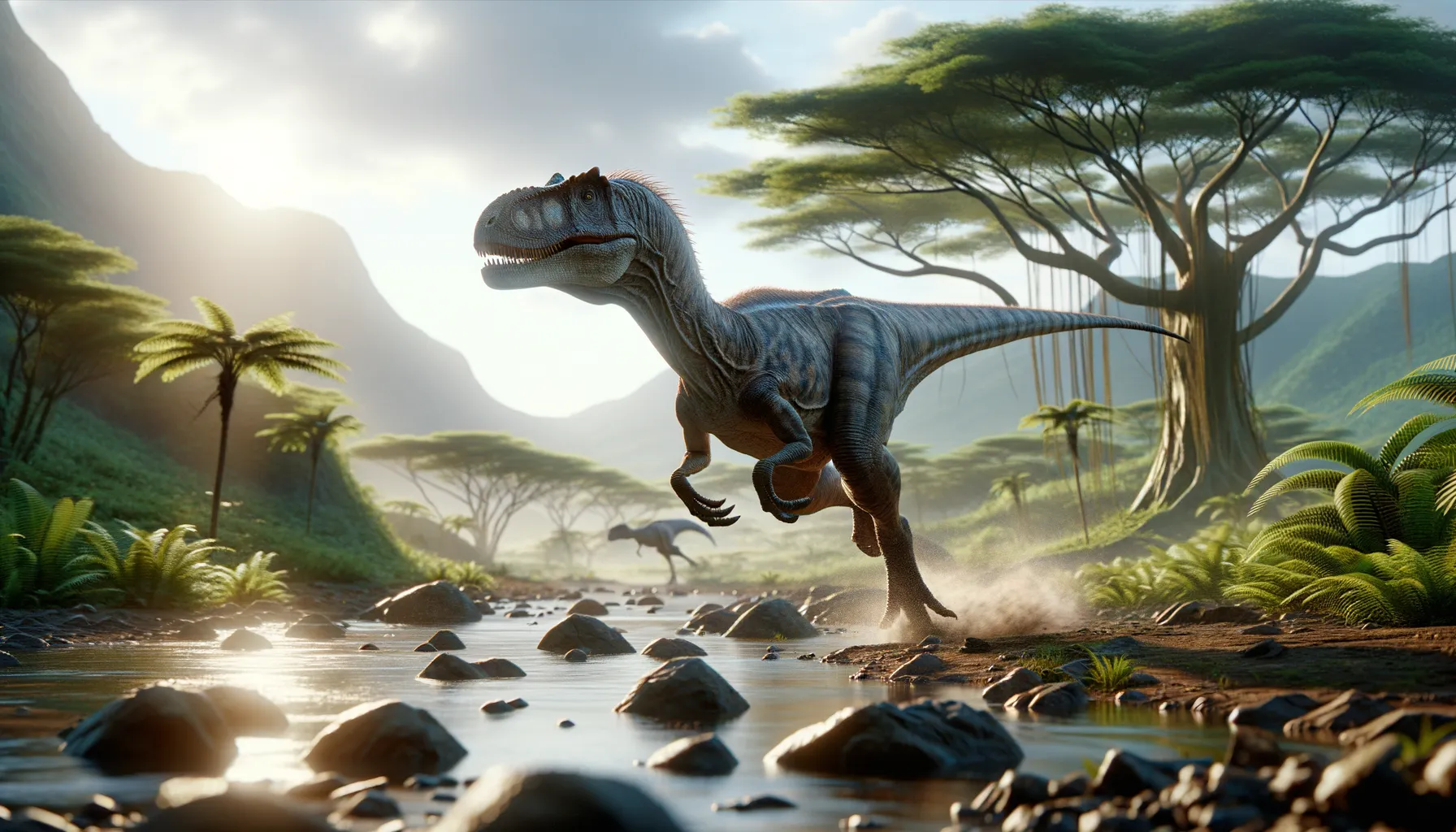
Eugongbusaurus
Swift-footed survivor of the Jurassic era.
Period
Jurassic
Length
Grew up to 2 meters in length.
Height
Stood about 1 meter tall at the hips.
Weight
Approximately 20 to 30 kilograms.
Eugongbusaurus was a small ornithopod dinosaur from the Middle Jurassic period, known to inhabit areas that are now part of Asia. It was a bipedal herbivore, relying on its speed and agility to escape predators. Its fossil remains contribute significantly to our understanding of dinosaur diversity in the Jurassic era.
Diet
Eugongbusaurus was primarily an herbivore, feeding on the abundant vegetation available during the Jurassic. Its diet likely consisted of ferns, cycads, and other low-growing plants.
Hunting
As a herbivore, Eugongbusaurus did not hunt other animals. Instead, it used its size and agility to forage efficiently and avoid predators.
Environmental challenges
Eugongbusaurus faced environmental challenges such as fluctuating climates and the presence of numerous predators. The landscape was periodically altered by volcanic activity, impacting plant availability. Adapting to these changes was crucial for its survival, influencing its evolution over time.
Speed
Likely a moderately fast runner for its size.
Lifespan
Estimated to live around 20 to 30 years.
First discovery
First discovered in China in the 1980s.
Fun Facts
- Eugongbusaurus was a small herbivorous dinosaur that lived during the Late Jurassic period.
- This dinosaur was discovered in what is now known as China, specifically in the Sichuan Province.
- Eugongbusaurus belonged to a group of dinosaurs called ornithopods, which were known for their bird-like hip structures.
- Despite its small size, Eugongbusaurus is believed to have been a fast runner, possibly to escape from predators.
- The name 'Eugongbusaurus' means 'well-forked lizard' and reflects key characteristics of its fossilized bones.
- This dinosaur had a beak-like mouth, perfect for snipping off plant material for food.
- The fossil discoveries of Eugongbusaurus have helped scientists learn more about the diversity of small herbivorous dinosaurs in Asia.
Growth and Development
The growth of Eugongbusaurus was marked by relatively fast development from juvenile to adult. It hatched from eggs and likely reached full size within a few years, allowing it to mature quickly in an environment with many threats. This quick growth rate might have been a survival strategy against predation.
Habitat
Eugongbusaurus lived in what is now China, amidst lush, vegetated landscapes. These habitats offered abundant plant life, including ferns and conifers, providing ample food resources. The climate during its time was warm and humid, supporting diverse ecosystems.
Interaction with other species
Eugongbusaurus shared its ecosystem with various other dinosaurs, including carnivores and other herbivores. Its small size and agility were crucial in avoiding predators and competing with other herbivorous species for resources. There might have been mutualistic relationships with other species that aided in survival.
Natural lifespan
Naturally, it could live up to about 30 years if it avoided predation.
Reproduction
Eugongbusaurus laid eggs, with nests likely built in protected areas to safeguard against predators. The young were probably precocial, meaning they were relatively mature and mobile soon after hatching, needing less parental care than some other species.
Social behaviour
Eugongbusaurus might have lived in small groups or flocks, offering communal protection against predators. Social behaviour could have included coordinated movement during migration and foraging, with possible vocalizations or visual signals as forms of communication.
Fossil locations
Fossils of Eugongbusaurus have been primarily found in China, specifically in the Sichuan Basin. These fossils have contributed to understanding the diversity of Jurassic herbivorous dinosaurs. The geological context of the finds indicates a lush environment that supported a variety of life forms during its existence.
